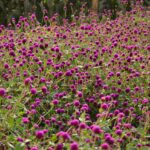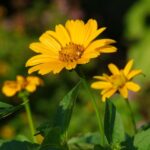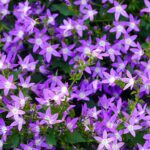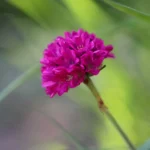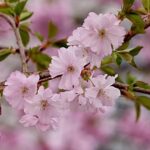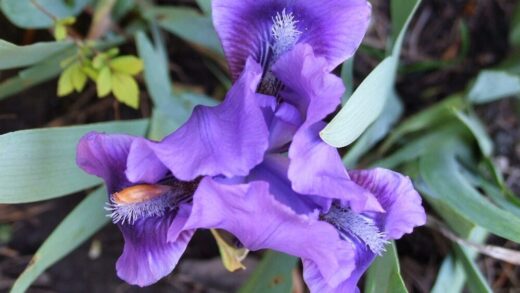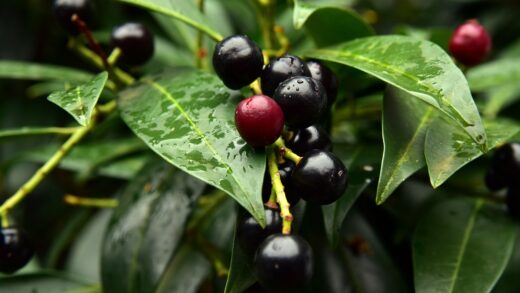The flowering almond, also known as the dwarf flowering almond, is one of the most charming jewels of spring gardens, heralding the revival of nature with its lush, pink blossoms. However, for this beauty to be repeated year after year, it is essential to maintain the plant’s health and provide proper plant protection. Unfortunately, the flowering almond, like many other members of the Prunus genus, is susceptible to certain diseases and pests that can cause significant damage to the foliage, flowers, and can even lead to the complete demise of the plant. Therefore, it is crucial for a conscious gardener to be aware of these threats and to recognize the symptoms in time for effective intervention.
The foundation of plant protection is prevention, which includes selecting the right growing site, proper pruning, and balanced nutrient supply. A strong, well-conditioned plant is much more resistant to pathogens and pests than a weakened, stressed one. The fight against diseases and pests is therefore not just about spraying, but part of a complex, well-thought-out care process that accompanies the plant throughout the year. Regular inspection and thorough examination of leaves and branches are key to identifying problems at an early stage. In this article, we will detail the most common pathogens and pests threatening the flowering almond, as well as the most effective methods of control.
The appearance of pathogens and pests is often related to weather conditions; a cool, rainy spring, for example, favors the spread of fungal infections. For the flowering almond, the most critical period is flowering, as many pathogens can easily enter the plant’s tissues through the open flowers. Pests, such as aphids, not only cause direct damage by sucking sap but also play an active role in spreading diseases. For this reason, an integrated plant protection approach is essential, which coordinately applies biological, agrotechnical, and, if necessary, chemical methods.
Successful plant protection is therefore based on knowledge: we need to know what to look for, when and how to intervene to protect the plant’s health. Making the correct diagnosis is the first and most important step, as only then can we choose the targeted and most effective control strategy. In the following, we will analyze the most common problems in detail so that every flowering almond owner can face the challenges prepared and enjoy the blooming ornament of their garden for a long time. With this knowledge, the gardener can confidently make decisions that contribute to the long-term vitality of the plant.
Fungal diseases: the invisible enemy
One of the most destructive and common diseases of the flowering almond is brown rot blossom and twig blight, caused by the fungus Monilinia laxa. The infection typically occurs during flowering, especially in cool, humid, rainy weather, when the pathogen enters the plant through the stigma. The symptoms are dramatic and appear quickly: the flowers suddenly wilt, turn brown, and then dry up, but remain on the plant as if scorched by fire. The infection spreads rapidly from the flower stalk to young shoots and twigs, which also wilt, turn brown, and die, often with a characteristic crooking of the branch tips.
More articles on this topic
The key to control is prevention, which includes the immediate removal and destruction of infected plant parts. Pruning should be done at least 10-15 centimeters into the healthy part to ensure that any fungal mycelium already present in the tissues is also removed. It is recommended to disinfect the pruning shears after each cut, for example with denatured alcohol, to prevent the spread of the pathogen. As a chemical control, a spring dormant spray with copper or sulfur-based products is essential to reduce the fungus overwintering in bark crevices, and it is worth repeating this before and after flowering with specific fungicides.
Another significant fungal disease is shot hole disease, caused by the fungus Stigmina carpophila. The first signs of infection are small, 1-3 mm diameter, reddish-brown spots with sharp borders appearing on the leaves. Later, the center of these spots becomes necrotic and falls out, leaving characteristic holes resembling shot holes in the leaf, hence the name of the disease. In severe infections, the leaves turn yellow and fall prematurely, which reduces the plant’s assimilation surface and leads to general decline, affecting the following year’s bloom as well.
Control of shot hole disease is also based on prevention. Autumn leaf collection and destruction are crucial, as the pathogen overwinters on fallen leaves and re-infects the plant from there in the spring. Proper spring pruning, which ensures an airy crown, also reduces the chance of infection, as quickly drying foliage is not favorable for the fungus. Chemical control begins with a spring copper dormant spray, which can be followed by repeated sprays during the growing season when symptoms appear, especially in rainy periods.
Pest attack: sucking and chewing pests
The flowering almond is readily attacked by various aphid species (Aphididae), which appear in large numbers on fresh, tender shoots and leaves in the spring. These small, usually green or black insects suck the plant’s sap, causing the leaves to become distorted, curled, and yellow, and shoot growth slows or stops. In addition to their feeding, they cause secondary damage by excreting honeydew, which coats the leaves, and on this sticky layer, sooty mold grows, inhibiting photosynthesis. Furthermore, aphids can also transmit numerous viruses.
More articles on this topic
For aphid control, early detection is important, so regularly inspect the shoot tips and the undersides of the leaves. For minor infestations, it may be sufficient to crush or cut off the infested shoot tips or to wash the plant with a strong jet of water. As part of biological control, encourage the establishment of natural enemies such as ladybugs, hoverflies, and lacewings in the garden. For severe infestations, you can use plant-based (e.g., orange oil, neem oil) or systemic insecticides, but always consider the protection of bees and carry out spraying in the early morning or evening hours.
Scale insects (Coccoidea) represent another insidious group of pests that colonize the woody parts of the flowering almond, on the branches and trunk. These insects live under a waxy shield that protects them from external influences and most pesticides. By sucking sap, they continuously weaken the plant, which can lead to yellowing of the foliage, cessation of growth, and in severe cases, branch dieback or even the death of the entire plant. Their presence is often noticed only when they have already formed large colonies and the damage is visible.
The most effective way to combat scale insects is prevention, which means applying a dormant oil spray in late winter or early spring. This spray coats and suffocates overwintering scale larvae and eggs. During the growing season, control is more difficult due to the protective shield; the greatest chance for successful intervention is during the crawler stage, when the young, shield-less larvae are moving. This period can be monitored by placing sticky yellow traps. For chemical control, systemic insecticides are needed that can enter the plant’s sap stream.
Bacterial and other pathogenic factors
In addition to fungal diseases, bacterial infections can also pose a serious problem for the flowering almond, especially bacterial canker and gummosis, caused by the bacterium Pseudomonas syringae. This pathogen enters the plant through wounds (e.g., pruning cuts, frost damage), mainly in cool, wet weather. Symptoms include dark, sunken spots and cankers on the branches, often with oozing gum. The infection blocks the vascular system, leading to the wilting and dieback of the branch parts above the canker, similar to the symptoms of brown rot.
The basis of controlling bacterial infections is prevention. Avoid wounding the plant, carry out pruning in dry weather, and seal larger cutting surfaces with a wound sealant to prevent pathogens from entering. A copper-based dormant spray before bud break is effective not only against fungi but also against bacteria, reducing the overwintering population. In case of an established infection, the diseased branch parts must be cut back well into the healthy wood, at least 20-30 centimeters below the symptoms, and destroyed, and the pruning shears must be continuously disinfected.
It is important to mention the phenomenon of gummosis, which is not a disease in itself but a symptom, the plant’s stress response. This yellowish, amber-colored, sticky substance is produced by the plant at the site of various injuries, such as mechanical damage, insect boring, frost cracks, or fungal and bacterial infections. Gummosis is therefore an important warning system that draws attention to a problem with the plant. Accurate diagnosis of the underlying cause is essential for choosing the appropriate treatment, which may be the removal of infected parts or control of pests.
Besides diseases, one must not forget about the stress caused by abiotic, i.e., non-living environmental factors, which can also produce disease-like symptoms. These can include improper watering (overwatering or drought), nutrient deficiencies (e.g., iron chlorosis, which manifests as yellowing leaves with green veins), excessive soil compaction, or winter frost cracks on the bark. These stress factors not only directly harm the plant but also weaken it, making it more susceptible to secondary infections and attacks by pathogens and pests.
The practice of integrated plant protection
Integrated plant protection is a complex approach that aims to maintain the health of the flowering almond in a long-term, sustainable way, with an emphasis on prevention. The first and most important step is selecting and planting the right plant. Look for healthy, strong plant material from a reputable nursery and provide it with a suitable location in the garden that meets its needs: a sunny, airy position and well-drained soil. Correct planting depth and proper soil preparation lay the foundation for the plant’s future vigorous growth and resilience.
Pruning is one of the most important agrotechnical procedures in plant protection. During late winter or early spring pruning, we not only shape the plant but also remove dead, diseased, damaged, or crossing branches. This both eliminates potential sources of infection and creates an airy, open crown. Good air circulation ensures that the foliage dries quickly after rain or watering, which significantly reduces the risk of fungal infections such as brown rot or shot hole disease. Always use sharp, clean tools for pruning.
A late-winter dormant spray is a cornerstone of integrated control for stone fruits, including the flowering almond. Spraying on a mild, frost-free day before bud break aims to destroy overwintering pathogens (fungal spores, bacteria) and pests (eggs, larvae) hiding in bark crevices and under bud scales. For this purpose, we most often use copper- or sulfur-based products, or horticultural oils, or a combination thereof. This single intervention can drastically reduce the spring infection pressure, providing a healthy start for the plant.
Chemical plant protection should always be the last resort when preventive and agrotechnical methods prove insufficient. If spraying is necessary, choose a targeted, problem-specific, environmentally friendly product and strictly follow the instructions for use regarding dosage, timing of spraying, and occupational health regulations. To protect bees, never spray flowering plants during the day; always time the treatment for early morning or late evening. The use of biological pesticides and the support of natural enemies are also an important part of sustainable gardening.







